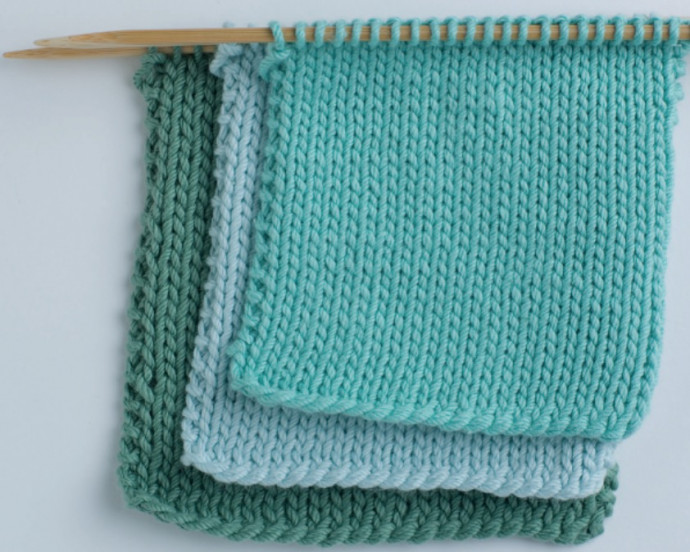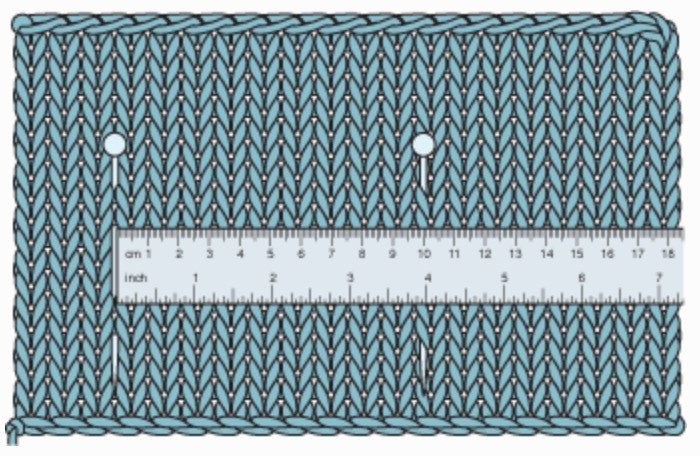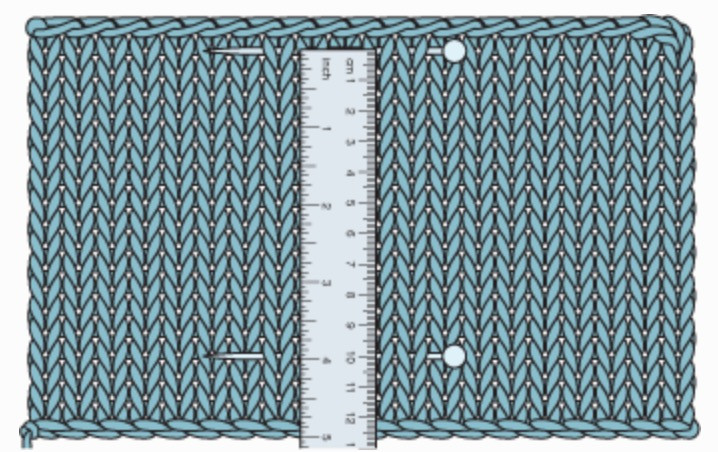Knitting Basics: How to Do a Tension Square

Novice knitters sometimes ignore this aspect of a knitting pattern, but you really must pay attention to it or all the time you spend knitting a project could be time wasted.
Tension will often tighten as your skills improve, so consider knitting a scarf as your first project. It gives you a long, straight piece of knitting to practice your techniques and if your gauge does tighten up, it won’t show very much.
Every knitting pattern will give a tension instruction at the beginning of the pattern.
The tension instruction will usually read something like: ‘20 stitches and 28 rows to 4in square over stockinette stitch using 6mm knitting needles’. What this is telling you is that you must have 20 stitches across 4in and 28 rows across 4in of your knitted fabric. These are the numbers of stitches and rows the designer has worked to and if your knitting doesn’t match these then your finished project won’t knit up to the correct measurements. The ball band of a specific yarn will also give a tension and this is the manufacturer’s tension , based on average use. This may be different to the designer’s gauge, in which case you must achieve the tension given in the pattern rather than the one on the ball band.
How to do a tension square
It can be tempting to skip knitting a tension square and just rush on into the project, but it is much safer to spend the hour or so needed to knit the square than to have to unravel the project later on.
Using the yarn and needles given in the tension instruction, cast on at least four stitches more than you need to achieve. Working in the stitch pattern stated, work at least four rows more than the number you need to achieve.
Do not bind off: leave the knitting on the needles while you measure it. The cast on edge and the row ends may be slightly tighter or looser than the middle of the knitting, so measure with the ruler centered on the fabric rather than touching the edges.
Step 1
Lay the knitting flat, without stretching it. Lay a ruler across the stitches with the starting point a couple of stitches in from the edge. Put a pin in the knitting at the start of the ruler and at the 4in mark. Count the number of stitches between the pins, including a half stitch if there is one.

Step 2
Measure 4in across the rows in the same way and count the number of rows between the pins.
If you have too few stitches to 4in, then your tension is too loose; if you have too many stitches, then your tension is too tight. You may think it’s not too bad if your tension is out by one stitch, but those stitches add up.
If, for example, you are making a fitted sweater that is to be 20in wide and the pattern tension is 20 STs to 4in, but you have only been able to obtain 19 STs to 4in, then you may think that you are near enough. However, there are five lots of those 4in across the sweater, so you are missing five stitches. Add the front and back together, and you will have a difference of ten stitches. In measurements this will mean that your sweater will be 2in larger than you want it to be. On a fitted sweater this will make quite a difference.
If you have a tension of 21 STs to 4in then the sweater could be 2in too small: this could be the difference between wearing it and giving it away. These discrepancies are the result of being just one stitch away from the pattern tension, so it is vital to achieve the correct tension.

Knitting accessories
Even if you are knitting an accessory, such as a bag, where the tension isn’t vital in terms of fit, then you should still do a tension square. This is because the style and shape of the project will be affected by the tension. Also, the tension you knit to determine how much yarn you use to work each stitch and if your tension is too loose, you risk running out of yarn before finishing the project.
How to obtain the correct tension
If you have knitted a tension square and discovered you are out by one or two stitches, what should you do next?
Never, ever just try to knit to a different tension. Everyone has a ‘natural’ tension – the tension their knitting action and the way they hold their yarn creates – and if you try to knit to a different tension , you will just end up with an uneven piece of knitting. «Instead, you must change the size of the knitting needles you are using. The general rule is that one difference in needle size will create a difference of one stitch in the tension .
If you were aiming for 20 STs to 4in using 6 mm needles but have obtained only 19 STs, then try again using 5mm needles. Conversely, if you have obtained 21 STs, then try again with 7 mm needles.
If you are out by two stitches, then you would need to alter the needles by two sizes.
